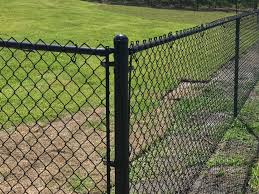Above their functional positive aspects, fences carry substantial symbolic importance in modern society. As physical limitations that delineate boundaries, fences signify notions of possession, personal identity, and sociable norms. Let’s explore the much deeper significance behind fences (ploty) and realize why they are crucial in shaping man relationships and panoramas.
1. Acquisition and Boundaries:
Fences serve as concrete marker pens of acquisition, demarcating in which 1 property comes to an end and another commences. This delineation of borders is not just about bodily space but in addition about asserting control and sovereignty over one’s site. Fences signify a feeling of management and that belongs, delivering people with a real reflection of the legal rights and obligations.
2. Ethnic Relevance:
In lots of ethnicities, fences maintain serious cultural importance and so are imbued with significance that mirrors societal values and norms. For example, in certain communities, fences are seen as emblems of exclusivity and elitism, isolating the haves from the have-nots. On the other hand, in additional communal countries, fences can be more permeable, symbolizing openness and inclusivity. Comprehending the cultural framework of fences allows us to enjoy their symbolic importance in different societies.
3. Sociable Divisions and Inclusion:
Fences can also symbolize societal divisions and exclusions inside areas. Substantial wall space and boundaries can symbolize segregation and inequality, developing physical boundaries that different men and women depending on class, competition, or ethnicity. However, fences with open gates and reduced wall space signify inclusivity and interconnection, attractive connections and encouraging a feeling of local community. The design and style and awareness of fences can thus reveal underlying sociable dynamics and power components.
4. Environment Effect:
The proliferation of fences has ecological ramifications, specifically in rural panoramas. Substantial fencing can fragment habitats and disrupt animals corridors, affecting biodiversity and ecosystem wellness. Nevertheless, eco-warm and friendly fencing alternate options, including wild animals-warm and friendly designs and permeable obstacles, offer you solutions that equilibrium human being requirements with environment conservation. By lessening their environment footprint, fences can contribute to the preservation of normal panoramas and wild animals habitats.
5. Traditional Legacy:
During history, fences have performed important jobs in shaping human communities and scenery. From old fortifications to colonial enclosures, fences have already been accustomed to assert control of territory and assets. The legacy of fences is reflected in literature, artwork, and folklore, where they represent designs of separation, confinement, and liberation. Comprehending the ancient framework of fences helps us enjoy their enduring significance in contemporary community.
In summary, fences (ploty) are more than simply bodily boundaries they can be signs that symbolize intricate sociable, cultural, and environment dynamics. As guardians of borders, fences condition man relationships and scenery, showing and strengthening social principles and norms. Understanding the symbolic significance of fences improves our understanding of the developed setting and our romantic relationship with the terrain.
